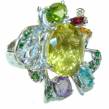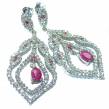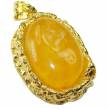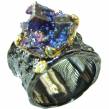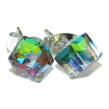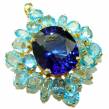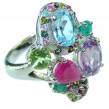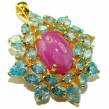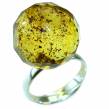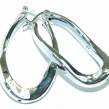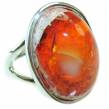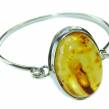What noble qualities will we find in natural stone jewelry?

Can gemstones improve our mood? Definitely, just like everything that is beautiful and has a value. How to distinguish the real precious stones from the artificial, what kind of magic does a diamond possess and whether it is worth it to buy expensive jewelry?

What we value most in jewelry, is a unique design and craft, but jewelry becomes a real jewel when beautiful gemstones are embedded in it, and we do not have too much of a choice when it comes to natural stone jewelry on the market. These jewels have a power that fascinates. Does this mean that we should give up diamonds for the benefit of other, cheaper, but no less beautiful stones?
We should not. A diamond is the most recognizable gemstone. Let’s say that it has a great PR. It is the hardest, most resilient and one of the most expensive gems, although not the most expensive one. There are many stones that are considered precious and they are, historically and culturally, more interesting. However, these colorful stones are not popular in the Polish market. I personally treat jewelry as a luxury element emphasizing the individuality of a woman, something that is her trademark, a talisman, so I always choose something that no one else has.

Precious stones are a fairly fluid group of stones. What they have in common, is a beautiful glow or color, as well as the appropriate hardness and resistance to the passage of time. We set the hardness on the Mohs scale. Diamond, the hardest natural mineral on Earth, has 10 degrees on this scale, and the softest mineral – talc – has a value of 1. Although there is no scientific division and it is referred to as jewelry stones, the hardness of a stone qualifies as precious when it has 6-7 Mohs degrees. It is about the durability of the stone in use. Amber, coral and pearl are much softer, but they are not stones. They are valuable organic materials. The most recognized precious stones next to the diamond are: ruby, sapphire, emerald, aquamarine, tourmaline, spinel, chrysolite named peridot and olivine, tanzanite and various grenades and quartz stones. There are so many of them that it is difficult to list them all. Almost all stones have unusual colors and glow and are used to make jewelry much longer than diamonds. Due to these qualities they are also attributed therapeutic and magical properties. They have also been treated as talismans and symbols of status for centuries as well as symbols of certain virtues, qualities, and meanings. It’s worth to mention here, that each stone is a bit different from the other and this wonderful variety makes them so fascinating.

For example, sapphires that we associate with blue are found in an extraordinary range of colors including pink, yellow, and black. The salmon-pink color called padparadise is one of the most sought after. For example, the very rare stone – alexandrite, is more expensive than the diamond. It changes color depending on lighting. Named after the name of Tsar Alexander II, it was originally mined only in the Urals and although other deposits are currently discovered, it is still a rarity. It is so rare and precious that many years after the development of the synthetic diamond manufacturing method, we are still looking for ways to obtain synthetic alexandrites. High quality rubies, above 2 carats, can also be more expensive than the diamond. The demand for these stones is high and the supply of high quality rubies is small.
To sum up, if you cannot obtain the most expensive diamond ring in the world (because you just invested in something completely different), there is nothing to lose. All you have to do is own a jasper, a malachite, or the beautiful blue lapis. They are natural stones just like diamonds. They appear a bit more frequently in nature and that is why they are a bit cheaper than diamonds.

